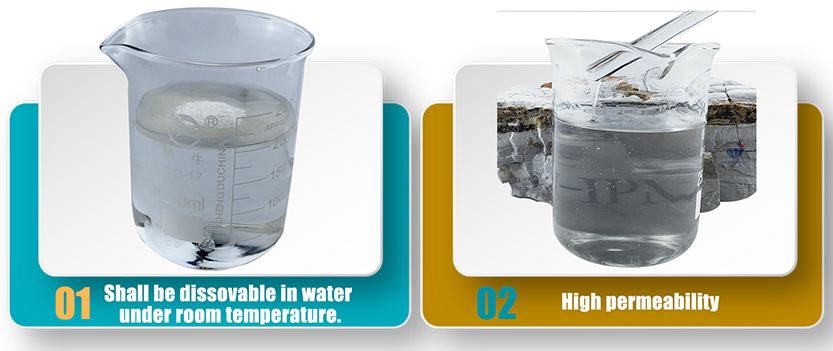
Oct . 10, 2024 15:10 Back to list
chemical structure of hpmc
The Chemical Structure of Hydroxypropyl Methylcellulose (HPMC) An Overview
Hydroxypropyl methylcellulose (HPMC) is a versatile polymer derived from cellulose, a natural polymer found in plant cell walls. HPMC is widely used in various industries, including pharmaceuticals, food, cosmetics, and construction, due to its unique properties. Understanding its chemical structure is pivotal to appreciating its numerous applications.
The Basic Structure of Cellulose
Cellulose itself is a linear polymer composed of repeating units of D-glucose, linked by β-1,4-glycosidic bonds. This structure gives cellulose its rigidity and strength, making it an essential component of plant structure. Chemically, cellulose consists of numerous glucose monomers joined in long chains, which can be arranged into microfibrils. These microfibrils provide the inherent tensile strength characteristic of cellulose.
Modification of Cellulose Hydroxypropyl and Methyl Substituents
To create HPMC, cellulose undergoes a chemical modification process where some of its hydroxyl groups (-OH) are replaced by hydroxypropyl (-OCH(CH3)2) and methyl (-OCH3) groups. This modification is essential as it introduces hydrophilic and hydrophobic characteristics into the cellulose backbone.
1. Methyl Substitution Methyl groups enhance the solubility of cellulose in water and organic solvents. The extent of methyl substitution can vary, but typically, 20% to 30% of the hydroxyl groups on the cellulose molecule are replaced with methyl groups. This alteration helps lower the polymer’s viscosity and improves its film-forming properties.
2. Hydroxypropyl Substitution Hydroxypropyl groups are introduced into the cellulose chain, further enhancing the solubility of HPMC in water. The presence of these groups allows for greater flexibility and reduces the crystalinity of the cellulose, making HPMC more amenable to dissolution in water compared to unmodified cellulose.
The Chemical Structure of HPMC
The chemical structure of HPMC can be summarized as a partially O-methyl and O-hydroxypropylated cellulose. This unique configuration allows HPMC to exist as a white or off-white powder that is odorless and tasteless. The degree of substitution—specifically, the ratio of hydroxypropyl to methyl groups—can be controlled during the synthesis process, providing versatility in its properties.
In general, the molecular structure can be represented as follows
chemical structure of hpmc

\[ \text{C}_{6}\text{H}_{10}\text{O}_{5} \cdot n \text{CH}_2\text{CHOH(C}_{3}\text{H}_{7}\text{)O} \]
Where \( n \) indicates the number of repeating units based on the degree of polymerization
.Applications of HPMC Based on Its Structure
The unique chemical structure of HPMC lends itself to a plethora of applications
1. Pharmaceuticals In drug formulations, HPMC is commonly utilized as a binder and a controlled-release agent due to its ability to swell and form gel-like substances when in contact with water. The controlled release of drugs becomes feasible due to the polymer's viscosity and hydrophilicity.
2. Food Industry In food products, HPMC serves as a thickening agent, emulsifier, and stabilizer. It enhances texture and mouthfeel, which is particularly useful in gluten-free formulations.
3. Cosmetics HPMC is used in cosmetic formulations as a thickener and emulsifying agent. Its non-irritating nature makes it suitable for sensitive skin applications.
4. Construction In the construction industry, HPMC is added to cement and mortar mixtures to improve workability and enhance adhesion.
Conclusion
The chemical structure of Hydroxypropyl Methylcellulose (HPMC) is a significant factor underlying its diverse functionality across multiple industries. With its hydrophilic and hydrophobic characteristics, HPMC not only contributes to solubility and viscosity but also provides various textural and functional advantages in applications ranging from pharmaceuticals to food and construction. The ongoing advancements in polymer chemistry continue to expand the potential applications of HPMC, making it an essential compound in modern technology and industry. Understanding its structure allows researchers and professionals to tailor its properties to meet specific needs effectively.
-
Versatile Hpmc Uses in Different Industries
NewsJun.19,2025
-
Redispersible Powder's Role in Enhancing Durability of Construction Products
NewsJun.19,2025
-
Hydroxyethyl Cellulose Applications Driving Green Industrial Processes
NewsJun.19,2025
-
Exploring Different Redispersible Polymer Powder
NewsJun.19,2025
-
Choosing the Right Mortar Bonding Agent
NewsJun.19,2025
-
Applications and Significance of China Hpmc in Modern Industries
NewsJun.19,2025







